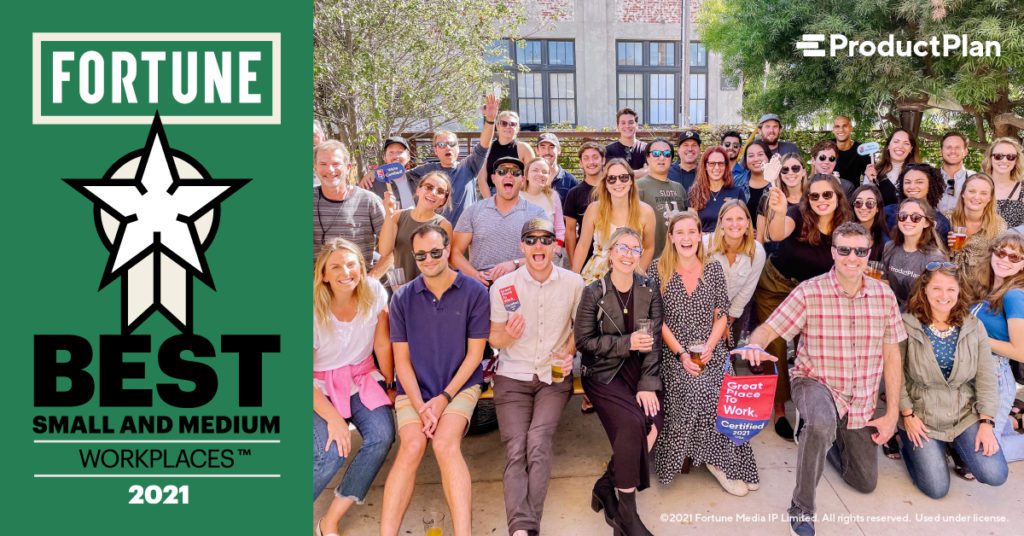At ProductPlan, we meet hundreds of product managers across virtually every industry. Their experience gives us invaluable insight into the profession, its challenges and its best practices.
Today’s post is based on an interview with Julie Hyman, Senior Product Manager for Dell Software Group. A product manager with more than a decade of experience, Julie now manages several data prep applications in Dell’s Toad suite.
ProductPlan: If you could give only one piece of advice to a new product manager, what would it be?
Julie Hyman: This one really took me a long time to learn — you always, always need to keep customer experience as a top priority. It sounds obvious, because in the end, of course that’s what makes for a successful product. But what you’ll find throughout the development process is that many constituencies in your organization are going to be coming to you with different agendas.
Sales will come to you and ask to break the app you’re building into two separate pieces, “So we can sell two SKUs.” Development might recommend you code the product differently from the way you have it on your product roadmap, “Because this other way will work more seamlessly with our backend system.” Even your executives might ask for shortcuts, “Because we really want that product rolled out for GA this quarter.”
You know what’s missing from all of those conversations? How any of those decisions will affect the customer experience. So that would be my one piece of advice: Always be your customers’ strongest advocate. Always keep their interests and their experience in mind.

PP: What are the big mistakes that you’ve seen product managers make?
JH: The biggest misstep I see is product managers getting too comfortable in one of two areas — either a strategic focus or a tactical focus — and then staying in that mindset all the time. To be an effective product manager, you really need to bounce back and forth between the two.
Here’s what I mean. Let’s say a software product manager really enjoys thinking big picture. So he holds lots of high-level, strategic meetings with executives and with marketing and sales to discuss five-year plans for his product. Or to discuss huge undertakings, like how the product will be adapted for mobile or the cloud. These are great conversations to have, but that same product manager is also responsible for the next release of the product, which means he’s got to spend time with his developers and his scrum master talking about features and other more tactical details.
I’ve also seen product managers make the exact opposite mistake — spending all of their time in the weeds, working every day with their development teams on the smallest details like the product’s background color and the size of the shadows on a button. Those are valuable conversations to have, too, but that product manager needs to lift his head up regularly, step back, and examine his product from a more strategic perspective.
What I’m saying is, product managers can’t really afford to be specialists. You need to know your product, yes, down to small details. But you also need to spend time and focus gaining insights into your company’s overall strategic goals, your market, your customer personas, your competitors, and plenty of other strategic items.
To be an effective product manager, you’re going to need a big shelf for all of your hats!

PP: How do you learn what your customers really think about your product and what they want from future versions?
JH: I ask them — directly. Feedback tools like SurveyMonkey can be effective, but in my experience nothing beats actually meeting with someone who is using your product in their everyday workflow, sitting next to them, and watching how they actually interact with it. Or getting on the phone with someone who is using your product and hearing what they have to say about it, the good and the bad.
This is another misstep I’ve seen a lot of product managers make. We can easily become too insulated, reading the industry magazines and analyst reports, and talking with our own colleagues, and substituting those opinions for our own market research. When you think about it, it makes no sense to do it that way because we obviously have a much richer source of feedback — our own customers!
We still need to use that third-party research from the analysts, of course. That research also includes invaluable information on the personas who don’t actually buy our products, the people who instead buy from our competitors, or who decide they don’t need a solution from any of us. We need to learn about what informs those decisions.
But I am always surprised at how many product managers I meet who have all of these opinions about why their products are succeeding or failing, and yet don’t go out and actually talk to their users, or who talk only to the same handful of “friendly” users all the time.
So my advice here would be to use it all. Read the independent industry research. Do your own SurveyMonkey surveys, but use them sparingly enough that you’re not turning off your customers or wasting their time. But above all, go visit your customers face-to-face, or get them on the phone for 20 minutes. Let them tell you in their own words what they like, dislike and want in your product.
PP: What would you say is the most important skill for a product manager to have?
JH: Above all else, I think that to succeed as a product manager you have to be an effective influencer.
Here’s why. Your title in most cases won’t give you the luxury of ordering people within your company to do things in a certain way or within a certain timeframe just because you want them to. In fact, you’ll often find that in many situations where you need to work with other teams, you won’t have any organizational authority.
The development constituents you work with could be anything from scrum masters to vice presidents — farther up in the company’s hierarchy than you are. Same with sales or marketing or PR. The people in these departments whose help you’ll need to drive your product development could all be higher than you are on the org chart.
So, how can you move these constituents to work with you, in a way that’s consistent with your vision, and bring your product successfully to market? You have to use your powers of influence.
In other words, you can only earn your authority with these constituents, by convincing and persuading your colleagues to see and agree with your strategic vision for your product. And to do that effectively, you need to use your knowledge, your reason, and your ability to paint the picture for them of where you want the product to go. (Enthusiasm doesn’t hurt, either.)
And how do you do this? Have good data. Use logic. And just as important, tell good stories. There’s an emotional component to a story, and it is how people will understand and relate to what you’re suggesting.
That means you need to communicate a successful vision of your customer’s experience. You need to paint a clear and compelling picture of what you’re trying to achieve for your customers. Then you need to use your powers of persuasion to bring all of these constituents onboard.
In the end, I think that the simplest way to think of your job as a product manger is as your product’s chief influencer.
Here’s another way to think of it. Being a product manager is more like being a coach than a supervisor. You can’t force it. These different teams, who will be so instrumental in helping you bring your product to market, will need to stay motivated and working toward a common objective through a development cycle. You need to convince them — and keep convincing them, over this development period — that the path they are taking with you is the best road to a successful product.



